Related Research Articles
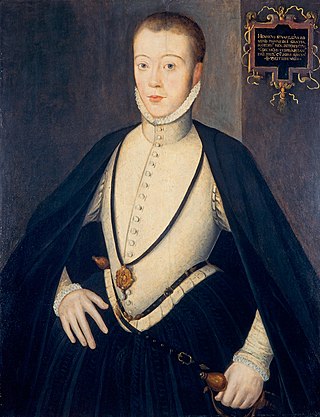
Henry Stuart, Lord Darnley, was the second husband of Mary, Queen of Scots, and the father of James VI of Scotland and I of England. Through his parents, he had claims to both the Scottish and English thrones, and from his marriage in 1565 he was king consort of Scotland. Less than a year after the birth of his son, Darnley was murdered at Kirk o' Field in 1567. Many contemporary narratives describing his life and death refer to him as simply Lord Darnley, his title as heir apparent to the Earldom of Lennox.
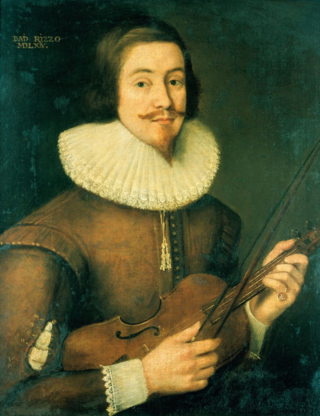
David Rizzio or Riccio was an Italian courtier, born in Pancalieri close to Turin, a descendant of an ancient and noble family still living in Piedmont, the Riccio Counts di San Paolo e Solbrito, who rose to become the private secretary of Mary, Queen of Scots. Mary's husband, Lord Darnley, is said to have been jealous of their friendship because of rumours that Rizzio had impregnated Mary, and he joined in a conspiracy of Protestant nobles to murder him, led by Patrick Ruthven, 3rd Lord Ruthven. Mary was having dinner with Rizzio and a few ladies-in-waiting when Darnley joined them, accused his wife of adultery and then had a group murder Rizzio, who was hiding behind Mary. Mary was held at gunpoint and Rizzio was stabbed numerous times. His body took 57 dagger wounds. The murder was the catalyst of the downfall of Darnley, and had serious consequences for Mary's subsequent reign.
James Balfour, Lord Pittendreich (c. 1525–1583) was a Scottish legal writer, judge and politician.
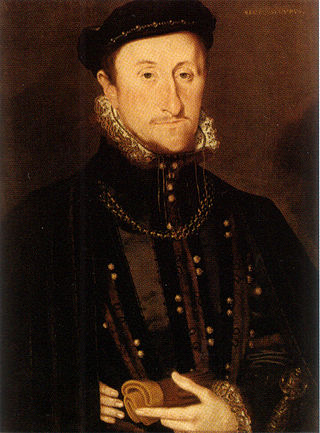
James Stewart, 1st Earl of Moray was a member of the House of Stewart as the illegitimate son of King James V of Scotland. A supporter of his half-sister Mary, Queen of Scots, he was the regent of Scotland for his half-nephew, the infant King James VI, from 1567 until his assassination in 1570. He was the first head of government to be assassinated with a firearm.

Lord Borthwick is a title in the Peerage of Scotland.

The College of Justice includes the Supreme Courts of Scotland, and its associated bodies.
John Lauder was Scotland's Public Accuser of Heretics. He was twice sent to Rome by King James V, to confirm the loyalty of the Scottish crown. As Principal Private Secretary to Cardinal David Beaton, Archbishop of St. Andrews, he successfully prosecuted many heretics, who were burnt at the stake, John Knox testifying to his extreme cruelty. Beaton was eventually murdered by the mob, but Lauder escaped and was later Private Secretary to Archbishop Hamilton.
Sir Robert Lauder of the Bass was a Scottish knight, armiger, and Governor of the Castle at Berwick-upon-Tweed. He was also a member of the old Scottish Parliament. The Lauders held the feudal barony of The Bass, East Lothian, Edrington Castle and lands in the parish of Mordington, Berwickshire, Tyninghame in Haddingtonshire, and numerous other estates and properties elsewhere in Scotland.

Stenton is a parish and village in East Lothian, Scotland. It is bounded on the north by parts of the parishes of Prestonkirk and Dunbar, on the east by Spott and on the west by Whittingehame. The name is said to be of Saxon derivation. The village has a number of houses, a school, and a church.

Morham, East Lothian, sometimes spelt Moram, Morum, or Morhame in old records, is the smallest (agricultural) parish in Scotland, sandwiched between five other parishes: Haddington, Garvald, Yester, Whittingehame, and Prestonkirk, in the undulating lower reaches of the Lammermuir Hills.
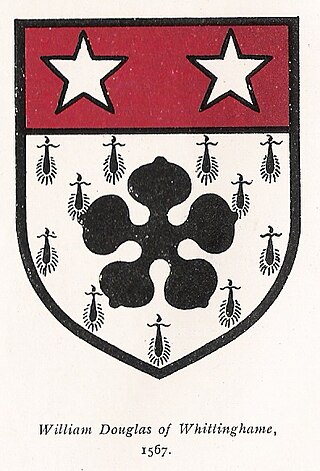
William Douglas of Whittingehame was a Senator of the College of Justice at Edinburgh, and a Royal conspirator.
Sir George Lauder of the Bass, Knight, was a cleric, Privy Counsellor, and Member of the Scottish Parliament. He was a legal tutor to Prince Henry.
Robert Lauder of The Bass was an important noble in Haddingtonshire, the Merse, and Fife. Stodart remarks that "to 1600 the barons of the Bass sat in almost every parliament". He was a firm supporter of Mary, Queen of Scots whom he accompanied to Carberry Hill on 14 June 1567, and fought for at the battle of Langside.
Sir Robert Lauder of Popill was a Scottish landowner and an adherent of Mary, Queen of Scots.
Henry Sinclair (1508–1565) was a Scottish lord-president of the court of session and bishop of Ross.

Jean Hepburn, Lady Darnley, Mistress of Caithness, Lady Morham was a Scottish noblewoman and a member of the Border clan of Hepburn. Her brother was James Hepburn, Earl of Bothwell, the third husband of Mary, Queen of Scots. Jean's first husband was John Stewart, 1st Lord Darnley, an illegitimate half-brother of Queen Mary, which made Jean a double sister-in-law of the queen. Jean married three times. She was also Lady of Morham, having received in 1573 the barony of Morham and lands which had belonged to her mother, Lady Agnes Sinclair and was forfeited to the Crown subsequent to her brother, the Earl of Bothwell's attainder for treason.
William Baillie, Lord Provand was a Scottish judge from Lamington.
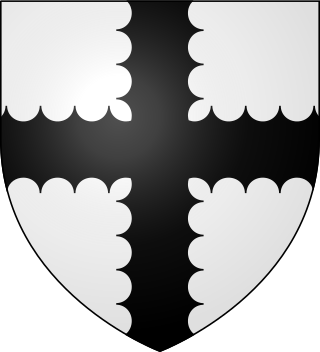
Oliver St Clair was a Scottish noble and the 12th Baron of Roslin.

Mary, Queen of Scots, and Henry Stuart, Lord Darnley, were married at the Palace of Holyroodhouse on 29 July 1565.
References
- A System of Heraldry, by Alexander Nisbet, 1722 [1984 facsimile], vol.1, pps:119–120, vol.2, appendix, p. 165.
- The Baronage of Scotland, by Sir Robert Douglas, Edinburgh, 1774, p. 247 .
- An Historical Account of the Senators of the College of Justice, by Sir David Dalrymple of Hailes, Bt., re-edited, continued, and republished, Edinburgh, 1849, pps: 63–4.
- The Manuscripts of Colonel Mordaunt Hay of Duns Castle, et al., Historic Manuscripts Commission, Hereford, 1909, p. 67, no.183 – Papal Bull of 1542.
- The Protocol Book of Mr.Gilbert Grote 1552–1573, edited by William Angus, Scottish Record Society, Edinburgh, 1914, p. 83, number 326.